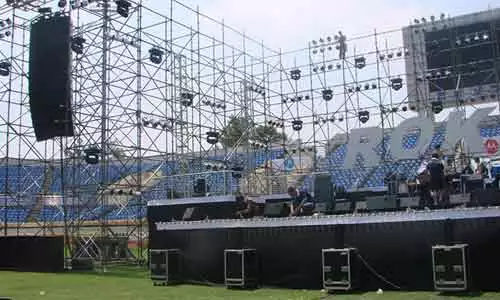
Audio delayer, as the name implies, is an audio device that delays the processing of sound signals, and is especially often used for long-distance sound reinforcement. In fact, the role of the delayer is not limited to this. So, under what circumstances do you need to use a delay, and what is the purpose of using a delay?
Five major uses of audio delay
1. It is used to improve sound clarity during long-distance sound reinforcement
The use of time delay in this aspect can be said to be the most commonly used. Generally, the outdoor sound reinforcement area is relatively large, and the sound reinforcement distance is relatively long. If you simply use the main speaker to amplify the sound, in order to enable the rear audience to hear the sound clearly, the sound pressure level of the front row will be extremely high. If the maximum sound pressure level at point A is 100dB at a distance of one meter from the loudspeaker, according to the formula SPL=SPLMAX-20lgR (SPLMAX=100dB) between sound pressure level and distance, it can be seen that every time the sound reinforcement distance doubles, the sound pressure level Reduce by 6dB, then the sound pressure level at point B, which is 32 meters away from the speaker (R=32m), should be only 70dB. There is a 30dB difference between the two, but in the actual sound reinforcement environment, the difference in sound pressure level will be even greater.
In order to avoid this phenomenon, the method of adding low-power supplementary sound boxes is usually adopted to avoid excessive sound pressure level caused by the distance between the front and rear rows. Since the sound propagation speed is about 340m/s, nearly 100ms has passed when the sound is transmitted to point B. The listener at point B will first hear the sound of the fill sound box and then the sound of the main speaker. In order to avoid the occurrence of this phenomenon, it is necessary to add an audio delayer before the power amplifier of the supplementary sound box, and delay the signal of channel b accordingly, so as to achieve the effect of improving the sound clarity. This is the most common use of audio delayers.
Of course, the use of reverberation methods can also increase the thickness of the sound, but the clarity will not be so good, and the intensity will also have a certain impact. Therefore, when the clarity and intensity are required, the delay processing will be added than the reverberation.

2. Correct the difference when multiple speakers occur in multiple frequency bands
Among the sound reinforcement equipment, there are many large-scale loudspeaker equipment. These loudspeakers have a common feature, that is, most of them use multiple loudspeaker designs to produce sound. The frequency responses of these loudspeakers compensate each other in order to pursue a flat frequency response curve . But this design has certain drawbacks. As shown in Figure 2, the three loudspeakers are A, B, and C. The diaphragms of the three loudspeakers have a certain position difference. Such position difference will cause different frequency bands to reach the human ear in different times.
Therefore, due to the temporal masking effect of the human ear, the human ear cannot correctly receive the original sound signal, so that the brain cannot correctly distinguish the sound signal. In some cases, the sound will sound slightly deficient in mid-to-high frequencies. In order to make the sound signals of multiple frequency bands reach the human ear at the same time, it is necessary to delay the two speakers B and C to restore the sound more realistically.
In this article, we focus on the delay processing in this area.
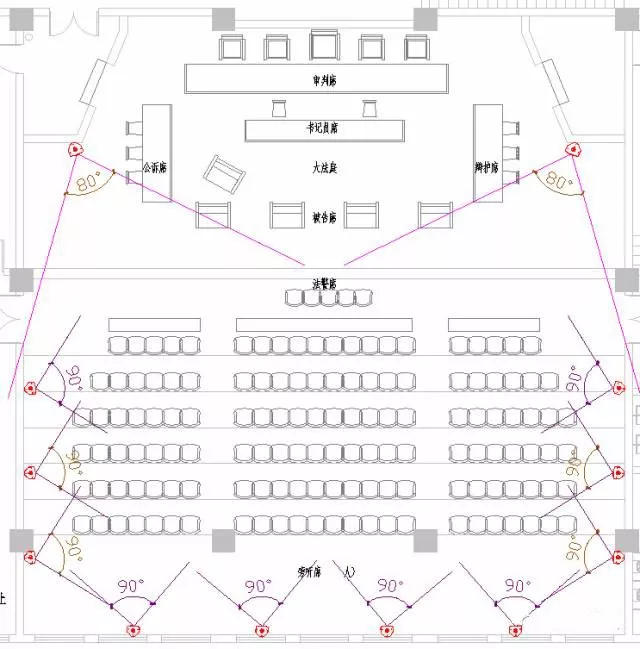
3. Use delay to realize sound and image positioning
We know that the speed of sound propagation in the air is about 340m/s, and during this propagation process, there will be a time difference and a difference in intensity. Due to the masking effect, the loudness of the sound is large and the mask is small. The sound of the speaker that is close will mask the one that is far away; the human ear can judge the spatial orientation of the sound source through the intensity difference and time difference of the sound source signal.
The Haas effect proves that when two sound sources emit exactly the same sound, the experience of binaural listening is different according to the amount of delay between one sound source and the other sound source. When the delay between one sound source and the other sound source is between 5ms and 35ms, the human ear can only perceive the existence of a sound source ahead, and the sound image localization is biased towards the position of the sound source ahead, and no lagging sound can be felt. The existence of the source; when the delay is 30ms-50ms, the human ear can distinguish the existence of two sound sources, but the sound image is still located in the forward direction of the sound source; when the delay is greater than 50ms, the human ear can feel the two Two sound sources exist at the same time, and the sound images are respectively located at the positions of the two sound sources.
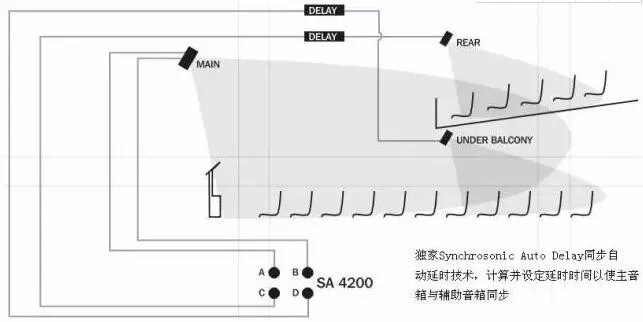
As shown in the figure above, due to the different distances between the main speaker and the delayed speaker to reach the audience, the time for the sound from the two speakers to reach the audience’s ears is not consistent. The delay speaker near the audience performs delay processing, so that the sound restored by the main speaker and the delay speaker can reach the audience's ears almost at the same time, thus ensuring the consistency of the sound image.
The use of delayer
1.Delay difference
To solve the problem of delay, we must first know the difference in time. Human ears can't hear it. We can use a tool, which is the SIA electroacoustic test software that we are all familiar with. Through testing, we can get the difference in time. If the position can be adjusted, change the position of the speaker to achieve the desired effect. If the position cannot be changed, use the delay function of the front-end device to adjust. Use the longest time as the standard, and adjust as much as possible. When the time difference is relatively small, adjust the phase to be consistent.
2. Calculation of delay time
Now the delay part adjustment of the delayer is generally divided into two modes: distance and time. The units for expressing distance are: meters and centimeters. The English units are: m and cm. 1m=2500px; the unit for expressing time is seconds. And milliseconds, the English units are: s and ms, 1s=1000ms, the two can be converted to each other, and the speed of sound is 340 meters per second. For example: the distance between the two speakers is 85 meters, to calculate the delay time between the two speakers, use 85÷340=0.25 seconds, which is 250 milliseconds, then we add the delay time to the delayer Just adjust it at 250ms; of course, for simplicity and intuitiveness, it is recommended to select the distance mode, and just adjust the delay distance in the delayer to 85m directly.
However, an experienced system tuner may know how much delay should be added based on the distance from the scene, but they are not foolishly guessing. There is a theoretical basis for this. The speed of sound is 331.5+0.6t (here, it is assumed that the speed of sound is about 340m/s). Therefore, the time required to transmit 34 meters is 0.1s, and a delay of 0.1s should be added to this delay speaker. For the delay in different positions, the added delay time is naturally different. The delay time depends on the distance between the speaker and the main speaker. In the processor, we can delay each channel according to demand. For example, a Delay interface with 4 inputs and 8 outputs processor, we can output 1-2 channels to the main speakers, 3-4 channels to the ultra-low speakers, and 5 -6 channels for delay speakers, 5 and 6 channels can adjust the respective delay time according to the position of the delay speakers.
The delay processing function of the digital processor
Of course, you can find that the popular use of digital processors is a development trend. It can adjust the relevant parameters in each channel very flexibly, although the current digital processors cannot completely replace traditional equalizers and compressors. Equipment, but it can completely replace the traditional delayer and frequency divider, which is the main reason why you can't find a familiar delay device in the industry market.
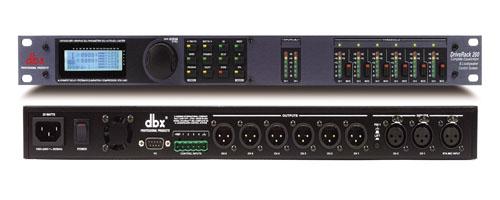
Taking the dbx 260 digital speaker processor as an example, we can perform different delay processing on each channel output by the 260 and provide it to different speakers. E.g:
1. The 1-2 channels of the output signal of the dbx 260 digital speaker processor are provided to the bass speaker. Since the sound emitted by the bass speaker is low, there is a sense of lag, so there is no need to delay the two channels. .
2. The 3-4th channel of the output signal of the dbx 260 digital speaker processor is provided to the main speaker. Among the three elements mentioned above, the main speaker is the second element, so there is no need to delay these two channels. deal with.
3. Channels 5-6 of the output signal of the dbx 260 digital speaker processor are provided for auxiliary speakers. Among the three elements mentioned above, the auxiliary speaker is the third element. We can observe that if the auxiliary speaker and the main speaker are the When the distance exceeds 20 meters, we can consider delaying the auxiliary speakers. At this time, we only need to select the delay processing in the 5-6 channels of the dbx 260, and adjust it flexibly according to the delay distance or delay time. it is good.
In addition, when designing a sound system, many senior industry professionals suggest that it is better to use delay equipment as little as possible. Whether in the outdoor or indoor sound field, we can use centralized sound reinforcement as much as possible, and then match the appropriate auxiliary speakers. A perfect sound system can be designed.
The delay processing of indoor and outdoor sound reinforcement systems
Delay processing of outdoor sound reinforcement system
There are many large-scale outdoor performances. Because outdoor performances are generally large in size, it is difficult to achieve consistent sound if distributed speakers are used for sound reinforcement. Therefore, most large-scale outdoor performances currently use centralized sound reinforcement methods and are not in the audience area. Set up an auxiliary sound box to directly radiate the sound of the main speaker to the audience. If the conditions are limited, an auxiliary sound box must be installed in the audience area. If the distance between the auxiliary speaker and the main speaker is 170 meters, according to the principle of sound 340 m/s, then we can delay the signal of the auxiliary speaker The delay time is 0.5 second, which is 500 milliseconds, so that the sound from the main speaker and the auxiliary speaker can reach the audience's ears almost at the same time, thus ensuring the consistency of the sound image. Of course, it is more troublesome to do this. Nowadays, large-scale linear array speakers are generally used in outdoor large-scale performances, which can project the sound farther and make the sound image more concentrated.

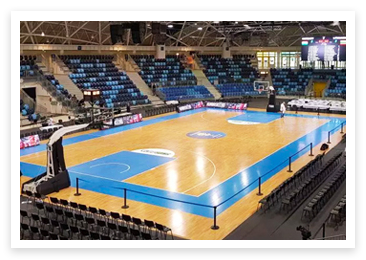
Delay processing of indoor sound reinforcement system
Like outdoors, in a large-area indoor sound reinforcement system, if the distance between the main speaker and the auxiliary speaker is long, it is also necessary to use a delayer for delay processing. Of course, the object of delay should be selected well. The area where the main audience is located is the main area. Delay the auxiliary speakers close to this area. The delay time depends on the distance between the speaker and the main speaker.
In fact, in most indoor sound reinforcement systems, due to the small area of the sound field, the distance between the speakers is not too far, so there is no need to use a delayer, which is why the audio delayer is not available in the sound system Reasons for widespread use.

 English
English

















